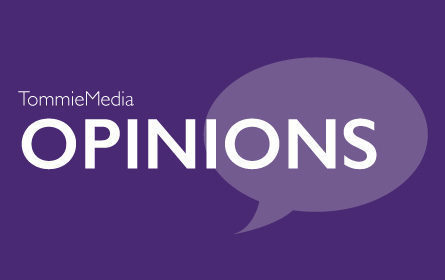For 83 years, the Federal Communications Commission has monitored radio stations across the United States. The FCC’s main agenda includes censoring any artist’s overly-suggestive, sexual language, along with muddying artist’s explicit and vivid narrations of violence and drug experimentation.
In recent years, however, music has found a seemingly organic way to combat the rigid, “no-fun” laws set in place by the government. The music industry’s weapon of choice? On-demand music streaming services — Apple Music and Spotify, among others. As these streaming services lure youngsters away from the radio, and away from the FCC’s power, lyrically explicit music is thriving. This is an important evolution in creating a more culturally aware society.
High school and college students are some of the most loyal and passionate music consumers in the market. We, the students, have massive influence in determining which music becomes popular, and which music goes unheard. Apple Music and Spotify offer student discounts to make their services affordable and retain the attention of the youth.
For the student price of $4.99/month, our country’s high school and college students are handed an unlimited and uncensored library of nearly every song released. The more than 30 million songs range from new releases to oldies. These streaming services are among the most powerful tools in shaping our generation’s popular culture.
Larger and larger herds of people are flocking toward streaming services, and away from the radio dial. As of April 2017, Spotify, Apple Music and other similar competitors boast a collective total of approximately 112 million paid subscribers.
These powerful music distributors give artists the freedom — for the first time in modern history — to create the music they want to create with complete independence from the FCC’s influence. As a result, more and more artists are becoming less concerned of gaining notable attention from radio DJs. Their work will be heard regardless.
The genre of rap has particularly profited from this music-consumption revolution. The music industry’s grimiest and most controversial genre has directly butted heads with the FCC for the better part of 35 years. Now, with the FCC’s power waning, the beautiful and often-misunderstood genre of our generation is fully flourishing. Some of 2017’s most popular acts include unapologetically vulgar artists such as Future, Migos and Travis Scott. Their hazy depictions of drugged-out nights at the club and endless sexual encounters are what the mass audiences of America’s youth crave to hear, and Apple Music or Spotify happily deliver. For the first time in music history, the consumer can handpick any song he or she would like, and rap music has proven to be our youth’s undisputed champion.
Need proof? On June 13, 2017, 12 of Apple Music’s 15 most popular tracks were of the rap genre. All 12 songs were branded with the infamous “E” symbol, stating the songs were riddled with explicit language. This symbol alone draws anxiety from parents of impressionable tweens all around the world.
While our parents and grandparents may cringe at the subject matter found on our playlists, I believe the emergence of uncensored music encourages many positive trends in the popular culture our youth instills into society.
Kids will always find ways to learn about our world’s ugly truths, no matter how much cultural shelter they are provided. I believe allowing a young teen to immerse themselves in issues of sexuality, race, and violence through music, far surpasses any kind of formal education on these issues.
Regardless of your stance on the effect of music on young adults, it’s hard to argue that more freedom is a bad thing. Increased musical freedom has been a direct consequence of the emergence of music streaming services, and this will allow for further musical experimentation and further musical breakthroughs.
I don’t know what the future of music has in store for us, but I’m quite excited to hear what additional creative freedom allows artists to conjure up. All while the FCC’s censorship laws plummet further into obsoleteness.



